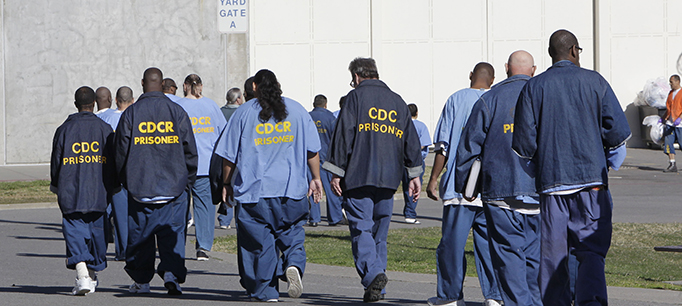After years of struggling with a 2009 federal court order to reduce the population in the state’s overcrowded prisons, the inmate population has reached the target of 113,700 (based on current capacity), roughly a year ahead of schedule. A look at historic prison and jail data reveals that this milestone has been achieved to a significant extent by adding capacity and simply shifting inmates to institutions not subject to the court order. As a result, cost savings from the various efforts appear lacking so far. The state’s spending on corrections is now at a historic high.
 Since reaching its peak in 2006 of about 163,000, the institutional prison population has dropped dramatically, by slightly more than 49,000. The court order mandated that inmate population be reduced to 137.5 percent of design capacity, or the number of inmates the facilities were intended to house.
Since reaching its peak in 2006 of about 163,000, the institutional prison population has dropped dramatically, by slightly more than 49,000. The court order mandated that inmate population be reduced to 137.5 percent of design capacity, or the number of inmates the facilities were intended to house.
Realignment, the state’s biggest correction reform, was a response to the court. It shifted incarceration of many lower-level felons and parole violators from state prison to county jails, beginning in 2011. However, a significant share of the prison population—about 18,000 inmates—declined before realignment. Most of this drop happened between 2009 and 2011 and was driven by policy changes such as SB 678, which created financial incentives for counties to lower the number of felony probationers they sent to state prison. Realignment then led to the largest decline, about 28,000, in the state’s institutional prison population. The post-realignment drop occurred in the first year of the reform.
The prison population did not start to decline further until November 2014, when voters passed Proposition 47, which classifies a number of drug and property offenses as misdemeanors instead of felonies. Since then, the institutional prison population has dropped an additional 3,000, which pushed the number of inmates below 137.5 percent of design capacity.
The state has met the crucial federally mandated target, but not—as reform proponents hoped—by a major reduction in costly prison incarceration. Here’s a rough breakdown of how this was achieved.
First, the decline of about 18,000 inmates in the institutional population prior to realignment was partly accomplished by housing about 9,000 offenders in private prison facilities out of state—a practice that continues on about the same order of magnitude. Second, since the implementation of realignment, the state has also incarcerated an additional 3,900 inmates in public and private facilities in the state. California has also opened up a new state prison health care facility in Stockton with a capacity of almost 3,000 inmates. Third, since realignment shifted responsibilities of many lower-level felons and parole violator to the counties, the county jail population has increased by about 11,500, as of June 2014 (the numbers may have come down some since then because of Proposition 47). In sum, roughly one half of the reduction of the institutional prison population since its 2006 peak was achieved by increasing capacity and simply shifting inmates to other facilities.
 California has indeed seen a significant decrease in the reliance on incarceration over the last decade through policies like SB 678 and realignment, as well as initiatives like 2012 Proposition 36 (which revised California’s “Three Strikes” law) and Proposition 47. Our total incarceration rate has dropped from about 702 per 100,000 residents in 2006 to about 568. Unfortunately this is not reflected in the state’s expenditures. In fact, spending on corrections is now at a historic high. A look at corrections spending going back to the 1970s shows a long-term increase. In the current budget year, the state is spending more than $12 billion on corrections. In other words, meeting the federally mandated target does not mean that California has solved its incarceration problem.
California has indeed seen a significant decrease in the reliance on incarceration over the last decade through policies like SB 678 and realignment, as well as initiatives like 2012 Proposition 36 (which revised California’s “Three Strikes” law) and Proposition 47. Our total incarceration rate has dropped from about 702 per 100,000 residents in 2006 to about 568. Unfortunately this is not reflected in the state’s expenditures. In fact, spending on corrections is now at a historic high. A look at corrections spending going back to the 1970s shows a long-term increase. In the current budget year, the state is spending more than $12 billion on corrections. In other words, meeting the federally mandated target does not mean that California has solved its incarceration problem.
Research shows that incarceration at current levels is not a cost-effective way to prevent crime. Clearly we need to refine our crime prevention strategy and look more closely for effective alternative approaches to manage public safety.


